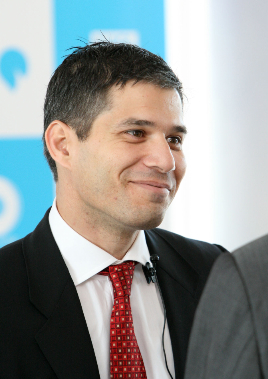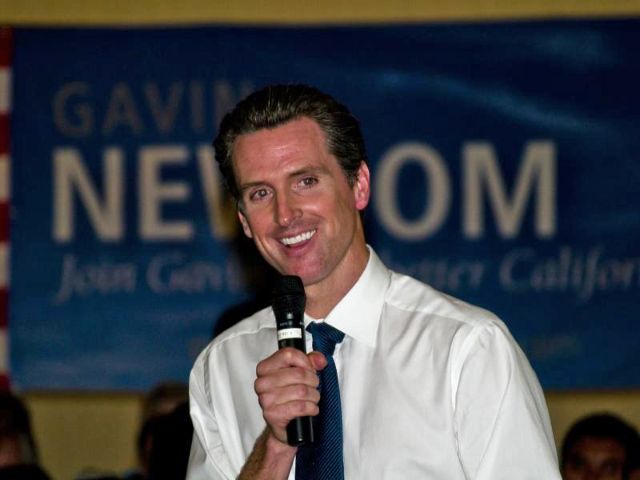Climate change is a global problem — but as of yet, there’s no global solution. That’s why mayors across the U.S. are taking action, from building green to organizing bike rides, from redeveloping downtowns to cutting emissions. Here are just a few of the municipal leaders who have worked to take our collective future into their own hands.
 Bloomberg unveils his grand Plan.PlanNYC 20301. Michael Bloomberg, New York City.
Bloomberg unveils his grand Plan.PlanNYC 20301. Michael Bloomberg, New York City.
Pop.: 8.2 million
Call New York the accidental eco-city: cram millions of people onto an island, and you’ve got to figure out how to build up, not out. Throw a big park in the middle, and voila: you’ve got an anti-sprawl city that values open space. During his tenure, Bloomberg has made the most of that happy accident, creating an ambitious 127-point initiative called PlanNYC 2030 that encompasses everything from reclaiming waterfronts to repairing electrical grids to reducing traffic congestion. (OK, that last one hasn’t gone so well.) A year after unveiling the plan in 2007, the city had launched a full 93 percent of its components.
 Nickels at a climate rally with King County exec Ron Sims, since tapped to head HUD.Oran Viriyincy 2. Greg Nickels, Seattle.
Nickels at a climate rally with King County exec Ron Sims, since tapped to head HUD.Oran Viriyincy 2. Greg Nickels, Seattle.
Pop.: 594,000
In some ways, Greg Nickels became synonymous with the phrase “green mayor” after spearheading the U.S. Mayors Climate Protection Agreement in 2005. Since then, more than 900 of Nickels’ fellow mayors have come on board, Republican and Democrat alike, from all 50 states. No stranger to eco-ideas at home, Nickels — who has led the Emerald City since 2002 — has also been instrumental in bringing light rail to the area, pushing to increase investments in open space, and launching an ongoing series of “clean and green” community-service events. He’s up for reelection this year, and one challenger says he hasn’t done enough on the environment. Only in Seattle.
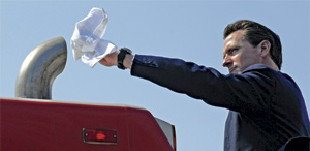 Newsom uses a white hanky to demonstrate clean diesel emissions. Seriously!MTC3. Gavin Newsom, San Francisco.
Newsom uses a white hanky to demonstrate clean diesel emissions. Seriously!MTC3. Gavin Newsom, San Francisco.
Pop.: 765,000
Another mack daddy of sustainability, Newsom is almost too green to believe. Since he took office in 2004, the city has reduced government emissions to below 1990 levels, launched the nation’s largest solar incentive program, banned plastic bags, and introduced ambitious green building and green jobs programs. Sometime in the not-too-distant future, city leaders hope to increase wind power by the Bay, including underwater turbines at the Golden Gate Bridge. Speaking at a conference of green IT entrepreneurs this spring, Newsom — who also recently confirmed his 2010 gubernatorial ambitions — offered up his city as guinea pig: “If you have an idea, let me know. We are a laboratory for innovation.”
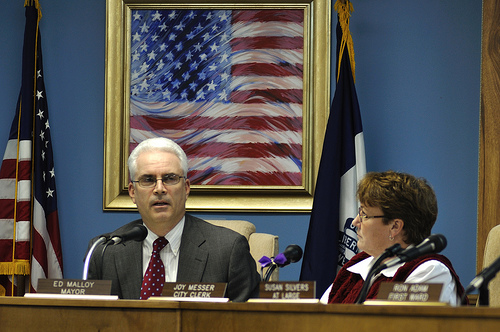 Malloy in a glamorous mayoral moment.Will Merydith/flickr4. Ed Malloy, Fairfield, Iowa.
Malloy in a glamorous mayoral moment.Will Merydith/flickr4. Ed Malloy, Fairfield, Iowa.
Pop.: 9,650
In November, the city fathers in this liberal southeastern Iowa outpost unanimously adopted a Green Strategic Plan. Their vote was more than ceremonial: they also secured a state-funded grant to hire a sustainability coordinator, inventory their greenhouse gases, and create educational materials for residents. The new plan envisions everything from conserving energy to supporting local farms. Malloy, who’s been mayor since 2001 and heads up a local oil company, says the environment-economy connection is clear. He hopes Fairfield’s ideas will catch on: “We want to create a model community, a virtual template that other small towns can adopt to create the same results.”
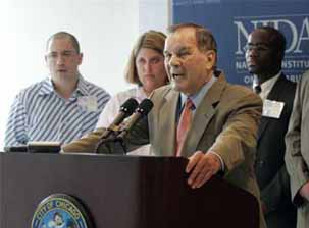 What a difference a Daley makes.www.drugabuse.gov5. Richard Daley, Chicago.
What a difference a Daley makes.www.drugabuse.gov5. Richard Daley, Chicago.
Pop.: 2.8 million
Since announcing his intention to make Chicago the country’s greenest metropolis, Daley has made great strides. Green roofs cover or are planned for 3 million square feet, topping everything from City Hall to a McDonald’s. Redevelopment and landscaping have revitalized gathering places across the city, from prominent landmarks like Grant Park to neighborhood playgrounds. And the Windy City is committed to increasing its use of renewable energy (though a recent revelation showed things lagging in that area). Chicago is even bidding to host the 2016 Olympics — a bid that hinges on the event being the greenest Olympics in history.
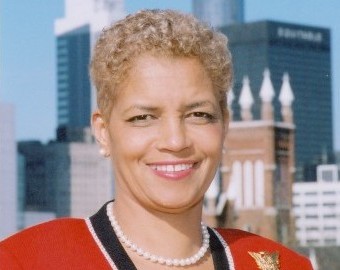 Franklin, my dear, she does give a damn.City of Atlanta6. Shirley Franklin, Atlanta.
Franklin, my dear, she does give a damn.City of Atlanta6. Shirley Franklin, Atlanta.
Pop.: 519,000
Often held up as the poster child for sprawl, Atlanta boasts more green than meets the eye — and Franklin is to thank for much of the recent progress. Mayor since 2002, she has attacked infrastructure and intangibles with the same gusto, from overhauling the city’s sewer systems to creating a Climate Action Plan. The city is building a public-transit BeltLine, is tops in LEED-certified buildings, and has implemented practices in City Hall that led to a 20 percent decrease in energy usage. A comprehensive private-sector group called Sustainable Atlanta is developing recommendations for further actions, and all eyes are on the future. “We are building a green, sustainable city,” Franklin says. “We do this for our children, and we do this because it is the right thing to do.”
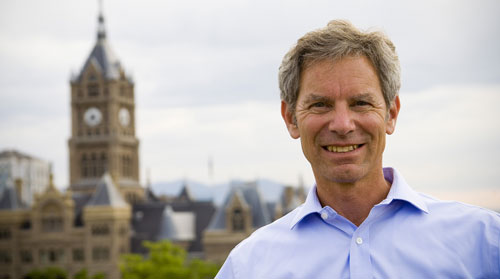 Planner, politico, father, grandfather.RalphBecker.com7. Ralph Becker, Salt Lake City.
Planner, politico, father, grandfather.RalphBecker.com7. Ralph Becker, Salt Lake City.
Pop.: 179,000
Building on the groundbreaking work of predecessor (and official Grist crush) Rocky Anderson, Becker — who took office in 2008 — has already made ripples in the eco-community. Upon taking the helm, Becker introduced his Blueprint for a Green City, in which he pledged to improve public transit, expand greenways, create neighborhood centers to promote walkability, and improve air and water quality. And the former urban planner isn’t just talking the talk; among other concrete steps, the city is piloting hybrid police cars and has undertaken an overhaul of its city code to make sustainability easier for all residents to achieve.
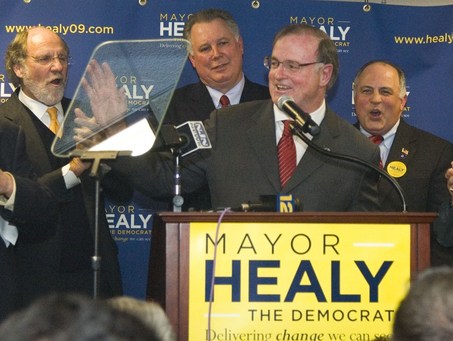 Don’t mess with Jerramiah.Byron Smith/Jersey Journal8. Jerramiah Healy, Jersey City.
Don’t mess with Jerramiah.Byron Smith/Jersey Journal8. Jerramiah Healy, Jersey City.
Pop.: 242,000
He’s a rough and tumble guy running a historically rough and tumble city. But that just goes to show that green can be pursued anywhere, by anyone. Healy was recently given a Green Leadership Award by the state U.S. Green Building Council chapter. During his five-year tenure, he has held polluters accountable, opposed a controversial reservoir development scheme, and redeveloped brownfields. Up for reelection this month, Healy recently introduced ordinances that would require city departments to pursue LEED certification and green purchasing, and is reportedly considering a ban on plastic bags.
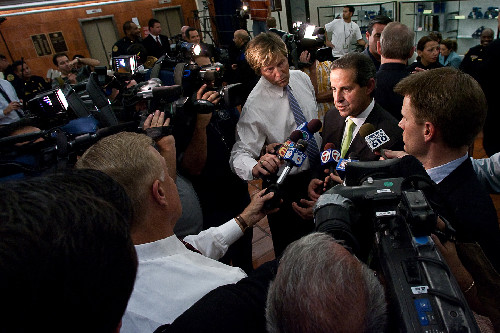 Manny being Manny.City of Miami9. Manuel Diaz, Miami.
Manny being Manny.City of Miami9. Manuel Diaz, Miami.
Pop.: 410,000
Though some critics have dubbed him “Concrete Manny” due to his love of development, Diaz is paving the way for sustainability in Miami. An early signatory to the U.S. Mayors Climate Protection Agreement, he created Miami’s first sustainability department and a community-wide Green Commission. He has pushed green building, led an energy-retrofit of City Hall that included solar-panel installation, and is converting the city’s fleet to more efficient vehicles. Late last year Diaz launched Bike Miami Days, and this spring the city hosted a week of events leading up to Earth Hour. “We’re on the front line of global climate change here,” Diaz told Newsweek in 2007. “The water level doesn’t have to rise too much for us to be riding around Miami in canoes.”
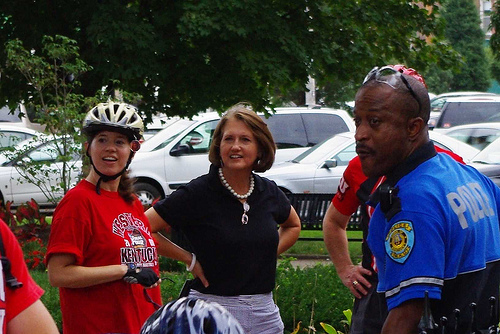 Walker? I’d rather bike.Robert the Noid/flickr10. Elaine Walker, Bowling Green, Ky.
Walker? I’d rather bike.Robert the Noid/flickr10. Elaine Walker, Bowling Green, Ky.
Pop.: 53,000
This TV producer-turned-politician has her hands full, from increasing affordable housing to contending with the crash of Big Auto, but green is on her radar screen. Transportation issues loom large in this western Kentucky city, and Walker has worked with local bike-advocacy groups (even creating a Mayor’s Bike Ride) and launched a Rethinking Transportation Choices task force. A signatory to the Mayors Climate Protection Agreement, she is a proponent of green building and downtown redevelopment. “There’s too much of a perception that going green is a little bit out there and idealistic,” she has said. “It’s not idealistic — it’s vital.”
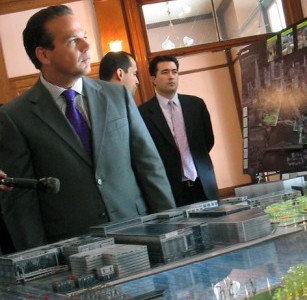 Cicilline envisions a model future.Cicilline.com11. David Cicilline, Providence, R.I.
Cicilline envisions a model future.Cicilline.com11. David Cicilline, Providence, R.I.
Pop.: 175,000
In late March, this native son signed an order requiring all new municipal buildings to be LEED-certified, saying such a move would help create jobs and boost the economy. It was the first step in a 30-point plan called Operation Opportunity that seeks to help this mid-sized New England city rise from the doldrums; other steps include doubling the recycling rate, creating a green jobs training corps, and finalizing site plans for wind turbines. Cicilline, at the wheel since 2003, has also named walkability and sustainable leadership among his goals for the city.
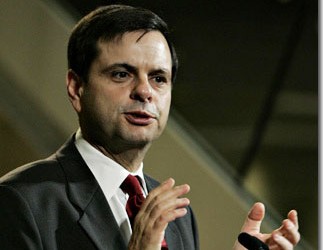 Get your Phil.Tom Story/ASU12. Phil Gordon, Phoenix.
Get your Phil.Tom Story/ASU12. Phil Gordon, Phoenix.
Pop.: 1.6 million
The long-time Phoenician made a splash in March when he unveiled a 17-point sustainability plan for the desert megalopolis he’s run since 2004. During his tenure, Gordon has already overseen eco-upgrades ranging from LED traffic lights to LNG buses, as well as bringing light rail to the city. The new plan aims to make Phoenix the first carbon-neutral city in America, through green job training, building retrofits, and a massive investment in solar energy. It’s making Phoenix hot in a whole new way.
 Coleman (left) and Rybak do their thing.Lou Michaels13. Christopher Coleman, St. Paul.
Coleman (left) and Rybak do their thing.Lou Michaels13. Christopher Coleman, St. Paul.
Pop.: 274,000
14. R. T. Rybak, Minneapolis.
Pop.: 377,000
The Twin Cities are in the hands of two progressive mayors intent on doubling the metro region’s eco-efforts. Coleman and Rybak, elected in 2005 and 2001 respectively, have both made sustainability a priority — Minneapolis, for instance, doles out climate change grants to neighborhood organizations, while St. Paul created its own hybrid car-sharing program. Together, the two leaders have created an annual sustainability report and a green manufacturing initiative, and they’re bringing bike-sharing to town. It’s all part of an effort, they say, to make theirs the most livable cities in the country.
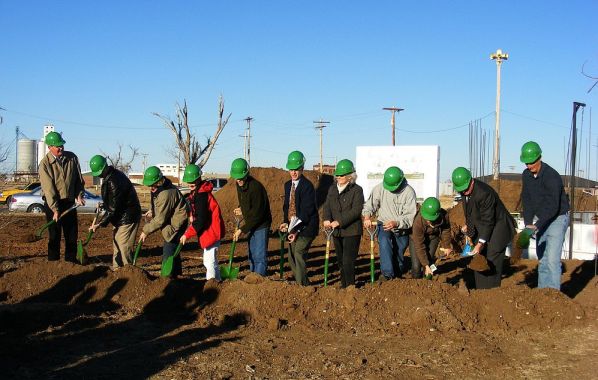 Dixson, far left, leads the groundbreaking of Greensburg’s first eco-home.Greensburg GreenTown15. Bob Dixson, Greensburg, Kansas.
Dixson, far left, leads the groundbreaking of Greensburg’s first eco-home.Greensburg GreenTown15. Bob Dixson, Greensburg, Kansas.
Pop.: 850
Talk about inheriting someone else’s problem: Bob Dixson became mayor of Greensburg in 2008, exactly a year after it was devastated by a tornado. But Greensburg has rallied, and the former postmaster is now overseeing the town’s much publicized green rebuilding effort (which has also been documented for TV). Learning as he goes, Dixson has become an eco-evangelist of sorts, traveling the nation to talk up renewable energy, green building, community spirit, and the common sense behind green. “In rural America,” he told Smithsonian magazine earlier this year, “we were always taught that if you take care of the land, the land will care of you.”
